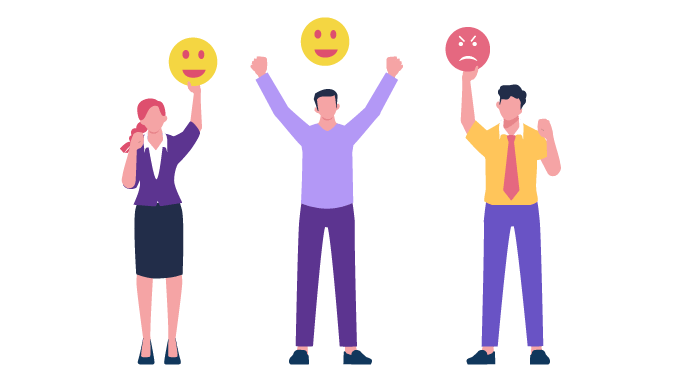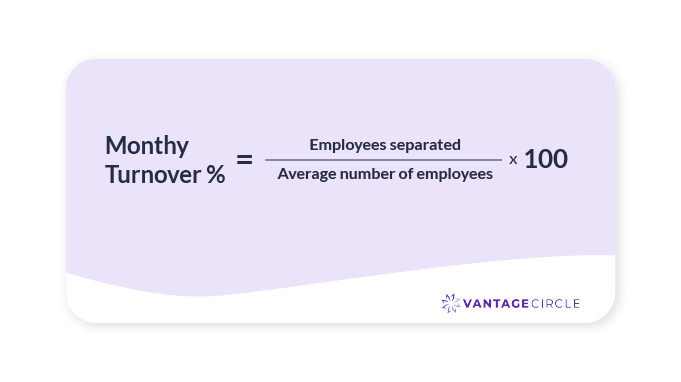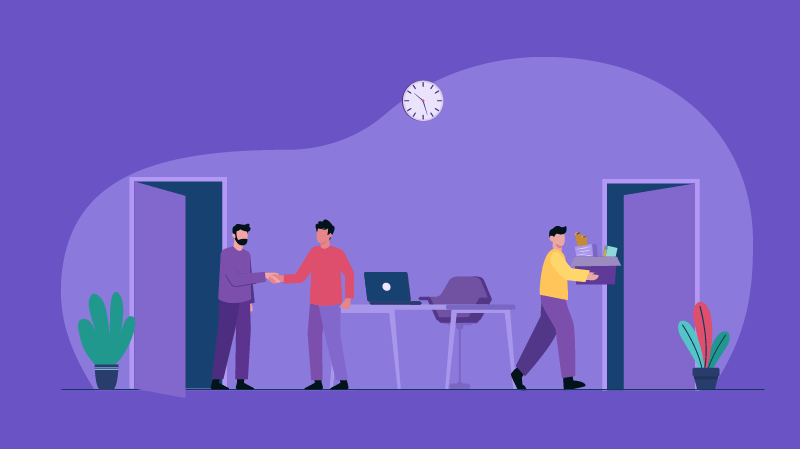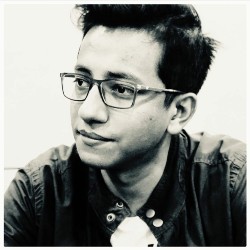What Is Employee Turnover And How To Calculate It
High employee turnover can be a formidable obstacle to success. Because good employees are hard to find and even harder to retain.
Losing your top performers can drain resources, disrupt productivity, and hinder growth. That's why reducing employee turnover is fast becoming the primary concern among companies worldwide.
Thus, understanding employee turnover to its core is imperative. Equally imperative is to know how to calculate the turnover rate. Since, it helps in devising effective retention strategies and identifying areas of improvement.
In this blog, we'll explore the concept of employee turnover and its significance. Additionally, we'll provide a guide on calculating the turnover rate within your organization.
So, let's begin.
Key Takeaways
- Meaning of employee turnover
- Types of employee turnover
- Top 7 reasons behind employee turnover and ways to mitigate it
- How is employee turnover rate calculated
- Purpose of calculating employee turnover
- Identifying healthy turnover rate
- Key way to stop your high-performing employees from leaving
What is the Employee Turnover?
Employee turnover refers to the departure of individuals from the organization where they're employed. Simply put, it's the rate of employees departing from an organization within a specific timeframe.
Various factors can contribute to employee turnover within an organization. Factors such as voluntary resignations, involuntary layoffs, terminations, transfers, or fatalities. Essentially, it includes any reason for exit other than natural causes such as retirement.
Employee turnover is an inherent aspect of business operations. Given that, it's prudent for every employer and HR practitioner to understand its different types. And also know how to compute the employee turnover rate.
Types of Employee Turnover
1. Voluntary Turnover
Voluntary turnover is when an employee decides to leave their current job for personal reasons. It can happen when employees switch to a different company, pursue further education, relocate to a different city, or various other reasons.
It's worth noting that voluntary turnover isn't limited to low performers. In fact, high-performing employees may choose to leave as well.
Thus, companies often prioritize efforts to understand and manage voluntary turnover rates effectively. Since, it helps to retain valuable talent and ensure organizational stability.
2. Involuntary Turnover
Involuntary turnover occurs when the employment of an employee is terminated by the employer. Now, this can happen due to various reasons, including
- Poor performance
- Restructuring or downsizing
- Disciplinary actions due to misconduct, or
- Retirement
Unlike voluntary turnover, involuntary turnover is typically initiated by the employer. In most cases, it may not be within the employee's control.
However, the way organizations handle involuntary turnover is very crucial. It has the potential to impact employee morale, employer branding and overall organizational culture.
3. Desirable vs Undesirable
Interestingly, employee turnover, whether voluntary or involuntary, can be further classified into desirable or undesirable.
Employees terminated due to poor performance or mismatch with organizational values are considered a desirable turnover. It's desirable since it enables the organization to address vacancies with new individuals possessing the right skills.
In contrast, undesirable turnover involves the loss of valuable employees to competitors or other opportunities. Such as top performers or individuals with critical skills. It can also be employees with long-term experience within the company.
Now, we know the meaning and types of employee turnover. But identifying the reasons behind employee turnover is also imperative to get a better understanding.
So, here are the key reasons or factors behind employee turnover.
Top 7 Reasons for Employee Turnover and Ways to Improve It
1. Training and Development

The only thing worse than training your employees and having them leave is not training them and having them stay.
~ Henry Ford
Organizations that fail to invest in employee development risk losing top talent to competitors. If only competitors offer better training and growth prospects.
It applies not only to new joiners but also to old-timers. They also need constant training and development.
It's also important for employers to understand that initial training efforts will cost you some amount of time and money. But once the employee gets skilled in their respective roles, they can provide you with better business results.
Action Steps to Improve Training and Development
A. Seek to implement proper training and development for your employees. It would help if you determined what training is needed and who needs it. Know the best resources to provide training. Also, it's important to fix the duration of the training.
Equally important is to assess the success of the training programs by utilizing proper metrics.
B. Develop mentoring and coaching programs. You can set up an e-learning program or Learning Management System (LMS). These platforms can help in,
- Centralizing training materials
- Managing learner's progress, and
- Tracking completion and performance.
C. You can conduct frequent seminars, presentations, and workshops to help your employees build their skills. You can step up by offering your employees tuition reimbursements.
D. A tuition fund can also be set up. You can encourage your employees to enroll in courses needed to upskill themselves.
2. Work-life Balance

Your employees have a lot of stuff to deal with every day. Meetings, office parties, interviews, deadlines, work events, and more. However, it's crucial to recognize that they've lived beyond the office.
Unfortunately, many organizations overlook this fact and risk losing valuable employees.
Employees are more inclined to invest their efforts in companies that offer a supportive work-life balance.
So, helping them strike a balance between their personal and professional life is imperative. Employees feel that companies that offer a good work-life balance are worth investing their efforts into.
Consequently, many organizations are extending Work From Home facilities to employees for a better work-life balance.
Action Steps to Improve Work-Life Balance
A. Encourage employees to take breaks.
B. Offer a flexible work schedule. Create a work-from-home policy that facilitates employees to work remotely per their requirements.
C. Offer paid time off.
D. Set expectations that time-off is indeed time-off. Do not ask employees to complete their work on off days.
3. Job Satisfaction

Job satisfaction can influence employee turnover rates within organizations.
Employees who are satisfied with their jobs are more likely to remain with the company for extended periods. They also tend to be more engaged.
A high level of job satisfaction also fosters a positive work culture where employees feel valued and appreciated.
Conversely, low job satisfaction can result in higher turnover as employees may seek opportunities elsewhere.
Successful employee retention is achieved by organizations that prioritize a positive work environment and address factors contributing to poor employee experience.
Action Steps to Improve Job Satisfaction
A. Regularly evaluate the competitiveness of your employee benefit and compensation offerings to ensure they remain in line with current industry standards.
B. Offer performance-based incentives or additional perks to recognize your employee's hard work and commitment.
C. Do not try to micromanage your employees. Empower them by providing autonomy and decision-making capabilities relevant to their roles and responsibilities.
D. Regularly conduct surveys to measure employee satisfaction levels. Identify areas for improvement.
This is where employee survey tools like Vantage Pulse come into play. With the help of e-NPS-based surveys, you can listen to your employees' voices and measure their satisfaction levels.
4. Company Culture

You can have all the right strategies in the world; if you don't have the right culture, you're dead.
~ Patrick Whitesell
Organizations have identified toxic company culture as a major concern in reducing employee morale and productivity.
A negative or unengaging culture can lead to disengaged employees who are more likely to seek opportunities elsewhere. Thereby resulting in higher employee turnover.
On the other hand, a positive company culture that values employee growth and promotes a healthy work environment effortlessly retains their employees.
Lack of diversity and inclusion is another factor that can hugely impact the company culture. It can hinder the sense of belonging for a certain group of people within the organization.
Action Steps to Improve Company Culture
A. Prioritize open and transparent communication throughout the organization. By promoting open communication, organizations can create a culture of inclusivity, collaboration, and mutual respect.
B. Employees should feel comfortable coming to their managers with any concerns, especially their treatment in the company due to their gender, ethnicity, sexuality, age, or other factors.
C. Create dedicated diversity task forces with team members from every department to train employees on diversity and inclusion in the workplace.
D. Create awareness among employees regarding workplace harassment. For example, implementing a sexual harassment policy in the workplace.
E. Increase your employees' involvement in the organization's decision-making processes. It can be as simple as asking for votes to decide the cafeteria menu or complex decisions like changes in company policies.
5. Hiring Process

Developing an efficient hiring process is often neglected, mainly because companies are so hard-pressed for time and resources that they want to fill vacant positions as soon as possible.
With this short-term view, they throw strategic planning out the window. They start interviewing candidates based on inconsistent processes. And sometimes, relying solely on gut instincts.
The issue at hand is the failure to hire the right people.
Such an approach sets the stage for high turnover. Hiring individuals who do not fit well culturally can lead to significant challenges in the future.
Action Steps to Improve the Hiring Process
A. You've to establish a systematic hiring approach.
B. Before releasing any new job listing to the public, share it internally with the team to see if it fits an existing teammate well.
C. Use good tools to keep your hiring process efficient and help create a great experience for everyone involved.
D. Focus the interview on understanding the candidate and what they value.
E. Do a thorough background check before hiring the candidate. Consider evaluating the emotional intelligence of the candidate before hiring.
F. Analyze the data collected during the exit interviews. Look for any patterns, whether the turnover is high during a certain period or within a specific department.
6. Defining The Right Roles

Every employee has a role that they will fit into.
Role clarity allows employees to understand precisely what is expected of them.
When employees know what's expected of them, they tend to:
- Feel confident about their contribution to the organization.
- Focus their time and efforts on tasks they've suitable expertise.
- Avoid working on tasks that are unrelated to their skillset.
- Spend less time trying to get a grasp of their duties and responsibilities. They already know what their priorities are.
- Feel less stressed since they know what is expected of them.
Simply put, when employees know their role clearly, they become more productive, self-assured, and optimistic. In such a scenario, it is less likely that they consider quitting.
But, a Forbes survey, found that 43% employees say their job role doesn't meet their expectations.
Regrettably, many organizations fail to provide adequate role clarity. Further, leaving employees to discover the mismatch over time. Such a realization often increases turnover rates as employees become dissatisfied with their roles. And the organization's inability to provide alignment and clarity.
Action Steps to Define the Right Roles
A. Creating lists is a good way to start. To make things easy, create 2 lists, where the first has details of the existing workforce and staff. The second list should highlight the tasks and roles required for the operations.
B. Another helpful tool is a rough organizational chart. This will be useful in analyzing how the organization's different departments or divisions interconnect.
C. Think of the role description as your guide or map for the management and the employee. This will help your employees attempt to attain the organization's goals.
D. Set expectations for the roles right from the hiring stage. Employees can perform to their best only when they know what is expected.
7. Internal Mobility Opportunities

Without mobility, there are no real opportunities for growth. So, what is mobility in an organization?
According to AIHR,
Mobility, or internal mobility, to be specific, is the movement of employees to new career and growth opportunities within the same organization.
Internal mobility can be vertical or lateral. It includes promotions, demotions, new positions, mentorships, cross-team or additional projects.
Employees are more likely to stay within the organization longer if they're provided the opportunity to move within.
Action Steps to Improve Internal Mobility
A. Educate the management on the benefits of internal mobility. Without understanding the benefits, managers won't be able to take full advantage of internal mobility.
B. Establish formalized internal mobility with clear guidelines, processes, and support mechanisms. By formalizing the internal mobility process, you can ensure consistency, fairness, and accessibility for all your employees seeking growth opportunities within the company.
C. Ensure transparency in communicating internal job postings and development opportunities to all employees.
D. Provide cross-functional training to your employees. This allows employees to develop new skills and gain greater insight into various organizational functions.
E. Don't make it a one-time-only project. Consider internal mobility as a long-term investment.
How To Calculate Employee Turnover Rate?
Calculating employee turnover rate is no rocket science. It's easier than it seems. Here is the formula for the Yearly Employee Turnover Rate.

You'll need three variables. Let's consider
X= Total number of employees who left the organization in the given year
Y= Employees at the beginning of the year
Z= Employees at the end of the year
Now, to calculate the average number of employees in the given year, all you've to do is:
Turnover Rate= X/ (Y+Z)/ 2*100
So, the formula divides the number of employees who left the company by the average number of employees over a specific period. In order to obtain the percentage, the formula then multiplies the number by 100.
For Example
Suppose, on 1st April 2023, your organization had 60 employees. By 31st March 2024, the number of employees in your organization has grown to 90.
But over the course of the year, 10 employees left the company, then the employee turnover rate currently stands at
Employee Turnover Rate = 10 / (60+90)/2 * 100
= 13.33%
This implies that for the year 2023-24, the employee turnover rate is 13.33%
The above formula is the one that is widely used to calculate the turnover rate yearly.
Turnover Rate Calculator
But, if you want to research patterns during the year, like spikes during significant quarters or changes after implementing new policies, then calculating the turnover rate frequently helps.
The monthly calculation of the employee turnover rate helps to analyze and study the patterns that any new organizational change has brought about.
So, here is the formula to calculate the monthly employee turnover rate.
Monthly Employee Turnover Rate
To determine the monthly turnover rate, take the number of monthly separations. Then, divide it by the average number of employees on the payroll.
After obtaining the figure, multiply it by 100.
You’ll get the Monthly Turnover Rate.

For Example
Suppose, in the month of January, your organization has an average of 120 employees. But, in the same month, 8 employees decide to leave. The turnover rate in your organization for the month of January 2024 will be
Employee Turnover Rate for January = 8/120*100
= 6.67%
This implies that your employee turnover rate for the month of January is 6.67%
Although the monthly employee turnover rate helps to analyze certain short-term changes, organizations usually prefer calculating the turnover rate annually. Since the yearly turnover rate provides a figure obtained over a longer period, and hence, reflects a significant pattern or data.
Turnover rates fluctuate with region, industry, and occupation variables. So, consider these factors whenever you calculate one turnover rate for the whole organization.
You must have observed the methods to calculate the employee turnover rate well by now. But after obtaining the percentage of the employee turnover rate in your organization, the next crucial step is to understand the purpose of calculating employee turnover rate.
What Is The Purpose Of Calculating Employee Turnover Rate?
Did you know that employee turnover rate serves as more than just a significant HR metric? It also acts as a diagnostic tool, revealing underlying organizational weaknesses that may not be immediately apparent.
A company's work culture, the success of its hiring practices, and overall personnel management can be determined by looking at its employee turnover rate. A thorough understanding of this concept can assist businesses in deploying successful methods to retain employees and promote employee engagement.
Moreover, a high turnover rate in an organization can be detected while calculating the turnover percentage. A high turnover rate is an expensive problem and will cost businesses dearly. In fact, even minor turnover rates incur significant expenses for an organization.
Turnover and replacement expenses at a 100-person company, with an average compensation of $50,000, might reach $2.6 million annually.
Besides being expensive, high turnover rates also indicate low employee satisfaction and poor employee experience.
Consequently, it impacts overall productivity in an organization.
So, knowing the rising turnover rate, you can better prepare your organization for the upcoming or incurring losses. You can bring positive change to the existing work culture, review your recruitment process, and change your compensation and benefits structure, to name a few.
The plus points of calculating the employee turnover rate don't end here. Employee turnover rate assists businesses in evaluating the risks of an employee leaving.
In addition, it can be beneficial in recognizing the opportunities for retention when new employees are hired.
What Is A Healthy Employee Turnover Rate?

Determining what constitutes a healthy turnover rate varies depending on your business. A higher turnover can benefit some companies while detrimental to others. Factors such as industry, growth opportunities, and business size play crucial roles in this assessment.
Generally, turnover rates around the national average are considered healthy benchmarks to aim for.
However, what truly matters is the composition of the departing employees.
If poor-performing employees exit, it will not affect the business adversely. However, the departure of high- performing employees can pose challenges.
While aiming for an average turnover rate, assessing the reasons behind departures is crucial.
When turnover is because employees find better career prospects or chances for skill growth, it often means the workplace culture is dynamic and focused on growth. But if turnover happens because employees are unhappy or some problems haven't been solved, it might show areas where leadership, communication, or how employees are engaged need to get better.
Therefore, organizations should view turnover as an opportunity to gain insights into workforce dynamics.
This involves,
- Fostering open communication channels
- Providing opportunities for professional growth, and
- Addressing any underlying issues that may contribute to turnover
What Is The Key Strategy To Retain Your high-Performing Employees
Many factors can contribute to employees leaving a job. Among them, the most popular ones are
- Lack of training and development
- Poor work-life balance
- Low job satisfaction
- Unhealthy company culture
- Inefficient management
- Unfair pay
- Excessive workload
- Employees experiencing burnout frequently
But according to Gallup, the biggest reason for employee turnover may be that no manager was trying to keep them.
Fifty-two percent of employees say their manager or organization could have done something to prevent them from leaving their job. But only about a third of former employees said they had a conversation with their manager about leaving before they quit.
It's not possible to keep every employee. But much more can be done to decrease your employee turnover rate. And, remember, it begins with the manager.
Managers can take steps to stop their top talent from leaving by
- Providing growth opportunities through training, projects and mentoring
- Recognizing accomplishments with praise and rewards
- Cultivating engagement by involving employees in decisions
- Focusing on creating an environment free of issues
- Listening to feedback through stay interviews
- Benchmarking compensation against industry standards
While some turnovers are inevitable, managers must sincerely attempt to retain their best talent. They can only do this by listening to what is making their talent leave. If you're a manager, try to understand the causes and fix them.
Also, you must encourage your employees to share their feedback.
Holding a thoughtful dialogue is the key here.
Wrapping It Up
High employee turnover has the capability of bringing an organization to a standstill. Understanding the root causes and implementing effective strategies can transform your organization into a retention powerhouse.
Retaining your employees is a long, overdue process, and it's okay! Good things need a period of effort to happen.
Don't let limited growth opportunities, toxic environments, or work-life imbalance hinder your success. Please take action now to create a workplace that fosters growth, nurtures well-being, and values its employees.
Embrace recognition programs, invest in professional development, and cultivate a positive culture that inspires loyalty and commitment.



















